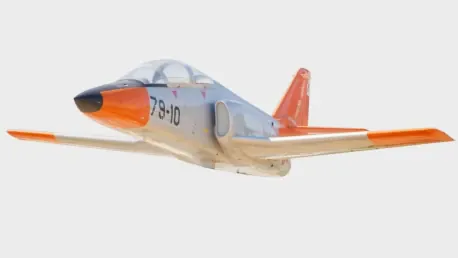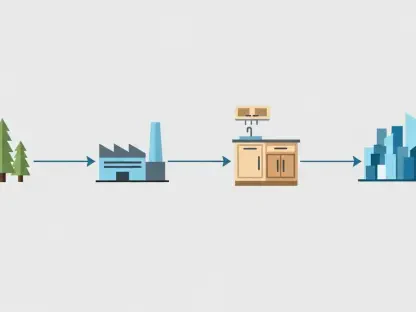Kwame Zaire is a manufacturing expert with an interest in electronics and equipment. He also focuses on production management and is a thought leader on predictive maintenance, quality, and safety.
Can you give us an overview of the key engineering advancements Beyond Aero has made since introducing the initial concept in June 2023?
Beyond Aero has made several engineering advancements since June 2023 to de-risk the hydrogen powerplant and accelerate certification. Key enhancements include a battery-free hydrogen fuel cell system, optimized gaseous hydrogen tank placement, and an advanced thermal management system for electric ducted fans. These changes improve safety, reliability, and performance, making the BYA-1 a pioneering hydrogen-electric light jet.
How does the battery-free hydrogen fuel cell system in the BYA-1 enhance safety and reliability compared to traditional systems?
The battery-free hydrogen fuel cell system in the BYA-1 enhances safety and reliability by eliminating the complexities and potential failures associated with batteries. With its modular architecture, two electric engines are powered by independent powerplant channels, ensuring redundancy and failure resilience. This design significantly exceeds industry safety standards.
What are the benefits of having a modular architecture with two electric engines powered by independent powerplant channels?
The modular architecture with two electric engines and independent powerplant channels offers several benefits, including enhanced failure resilience and scalability. This setup ensures that if one powerplant channel fails, the other can continue to operate, providing an added layer of safety and reliability.
How does increasing the fuel cell stack capacity to 2.4MW contribute to the aircraft’s performance?
Increasing the fuel cell stack capacity to 2.4MW enhances the aircraft’s overall performance by providing more power for propulsion. This increase allows the BYA-1 to achieve better efficiency, longer range, and improved operational capabilities.
How has Beyond Aero optimized the placement of the gaseous hydrogen tanks to improve safety?
Beyond Aero has optimized the placement of gaseous hydrogen tanks by integrating 700-bar fuel tanks above the wing box structure. This design improves crashworthiness and safety by minimizing the risk associated with high-pressure fuel lines inside the pressurized cabin.
Can you explain the significance of integrating 700-bar fuel tanks above the wing box structure?
Integrating 700-bar fuel tanks above the wing box structure is significant because it enhances the aircraft’s crashworthiness. This placement ensures that in the event of a crash, the tanks are better protected, reducing the risk of fuel leakage and improving overall safety.
How does eliminating high-pressure fuel lines inside the pressurized cabin align with aerospace safety protocols?
Eliminating high-pressure fuel lines inside the pressurized cabin aligns with aerospace safety protocols by minimizing potential hazards. This design reduces the risk of high-pressure leaks and potential cabin contamination, adhering to strict safety standards in aviation.
What role does the advanced thermal management system play in the performance of the electric ducted fans (EDF) in the BYA-1?
The advanced thermal management system plays a crucial role in optimizing the performance of electric ducted fans (EDF) by ensuring efficient heat dissipation. This system allows the EDFs to operate efficiently under extreme conditions, enhancing propulsion performance and reliability.
How does the custom-designed Full Authority Digital Engine Control (FADEC) system ensure precise performance across all flight phases?
The custom-designed Full Authority Digital Engine Control (FADEC) system ensures precise performance by continuously monitoring and adjusting engine parameters. This system provides optimal control and efficiency across all flight phases, enhancing the overall performance and reliability of the aircraft.
Beyond Aero claims that the BYA-1 can lead to lower maintenance and operational costs. Can you elaborate on this?
Beyond Aero’s BYA-1 leads to lower maintenance and operational costs due to its simplified all-electric powertrain, which features 90% fewer moving parts compared to traditional systems. This reduction in complexity decreases the need for frequent maintenance, cutting operational costs significantly.
How does the simplified all-electric powertrain with fewer moving parts contribute to this reduction?
The simplified all-electric powertrain with fewer moving parts contributes to cost reduction by minimizing wear and tear, reducing the frequency of maintenance checks, and lowering the overall cost of repairs. This design ensures higher reliability and longer intervals between maintenance.
What is the proposed modular engine swap system, and how does it streamline the overhaul process?
The proposed modular engine swap system streamlines the overhaul process by allowing quick and easy engine replacements. This system minimizes downtime and maintenance complexity, enabling operators to swiftly replace engines and get the aircraft back in operation.
What are the cost benefits of using hydrogen fuel compared to traditional fuels like Jet A-1 and Power-to-Liquid SAFs?
Hydrogen fuel offers significant cost benefits compared to traditional fuels like Jet A-1 and Power-to-Liquid SAFs. Beyond Aero expects hydrogen fuel to cut costs by 65% by 2025 and 17% by 2030, making it a more economical and sustainable option for aviation.
Can you provide insights into the expertise and contributions of the advisory committee assembled by Beyond Aero?
The advisory committee assembled by Beyond Aero includes top executives and engineers from leading aerospace firms and aviation stakeholders. Their expertise has been instrumental in validating the program’s feasibility, confirming the technical viability of the aircraft, and ensuring readiness for certification and market adoption.
How is Beyond Aero planning to meet the demand for low-carbon alternatives in the business aviation market?
Beyond Aero plans to meet the demand for low-carbon alternatives by developing the BYA-1, an advanced hydrogen-electric light jet. With a range of 800nm, a ground roll of 620m, and a 5.5° approach angle, the BYA-1 is designed for operational flexibility, making it suitable for constrained airports and various flight routes.
What are the specific performance metrics of the BYA-1, such as range, speed, takeoff ground roll, and approach angle?
The BYA-1 features a range of 800nm, a maximum speed of 310KTAS, a takeoff ground roll of 620m, and an approach angle of 5.5°. These metrics ensure the aircraft’s operational flexibility, making it suitable for a wide range of airports and flight routes.
Why are these metrics important for operational flexibility, especially for constrained airports?
These metrics are important for operational flexibility because they allow the BYA-1 to operate in airports with shorter runways and steeper approach angles, such as London City airport. This capability increases the range of destinations the aircraft can serve, enhancing its marketability.
How does Beyond Aero plan to enhance the passenger experience in the BYA-1?
Beyond Aero plans to enhance the passenger experience in the BYA-1 by incorporating 27% larger elliptical windows and utilizing low-noise electric propulsion combined with advanced acoustic insulation. These features maximize natural light, reduce cabin noise, and improve overall comfort.
What are the advantages of having 27% larger elliptical windows?
The 27% larger elliptical windows offer passengers increased natural light and panoramic views, creating a more spacious and enjoyable flying experience. This design enhances passenger comfort and satisfaction during flights.
How does the low-noise electric propulsion combined with advanced acoustic insulation improve cabin comfort?
The low-noise electric propulsion, along with advanced acoustic insulation, significantly reduces cabin noise by 15dB(A), cutting perceived noise levels by more than half compared to competitors. This improvement results in a quieter and more comfortable cabin environment for passengers.
Could you update us on the progress of regulatory approvals with EASA for the BYA-1?
Beyond Aero is actively working with EASA on regulatory approvals for the BYA-1. Since submitting its Design Organization Approval (DOA) application in April 2024, the company has progressed through EASA’s Pre-Application Services and is currently defining a certification framework for hydrogen-powered aircraft.
What steps has Beyond Aero taken to achieve Design Organization Approval (DOA)?
To achieve Design Organization Approval (DOA), Beyond Aero has been actively collaborating with EASA, submitting necessary documentation, and participating in Pre-Application Services. These steps are crucial for establishing a certification framework tailored to hydrogen-powered aircraft, setting a precedent for future aviation technologies.
Do you have any advice for our readers?
My advice for readers is to stay updated on advancements in sustainable aviation technologies. The industry is evolving rapidly, and innovations like those from Beyond Aero are paving the way for a more sustainable and cost-efficient future in aviation.









